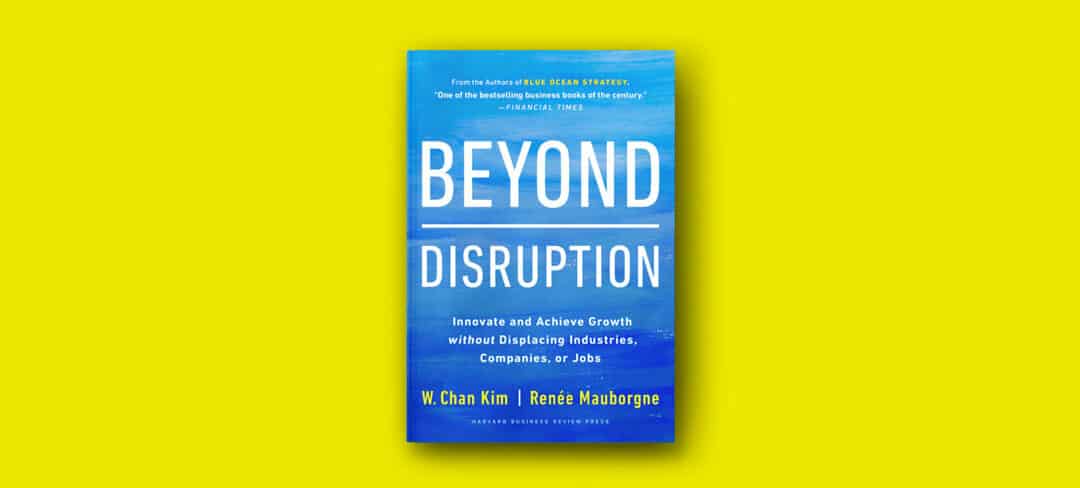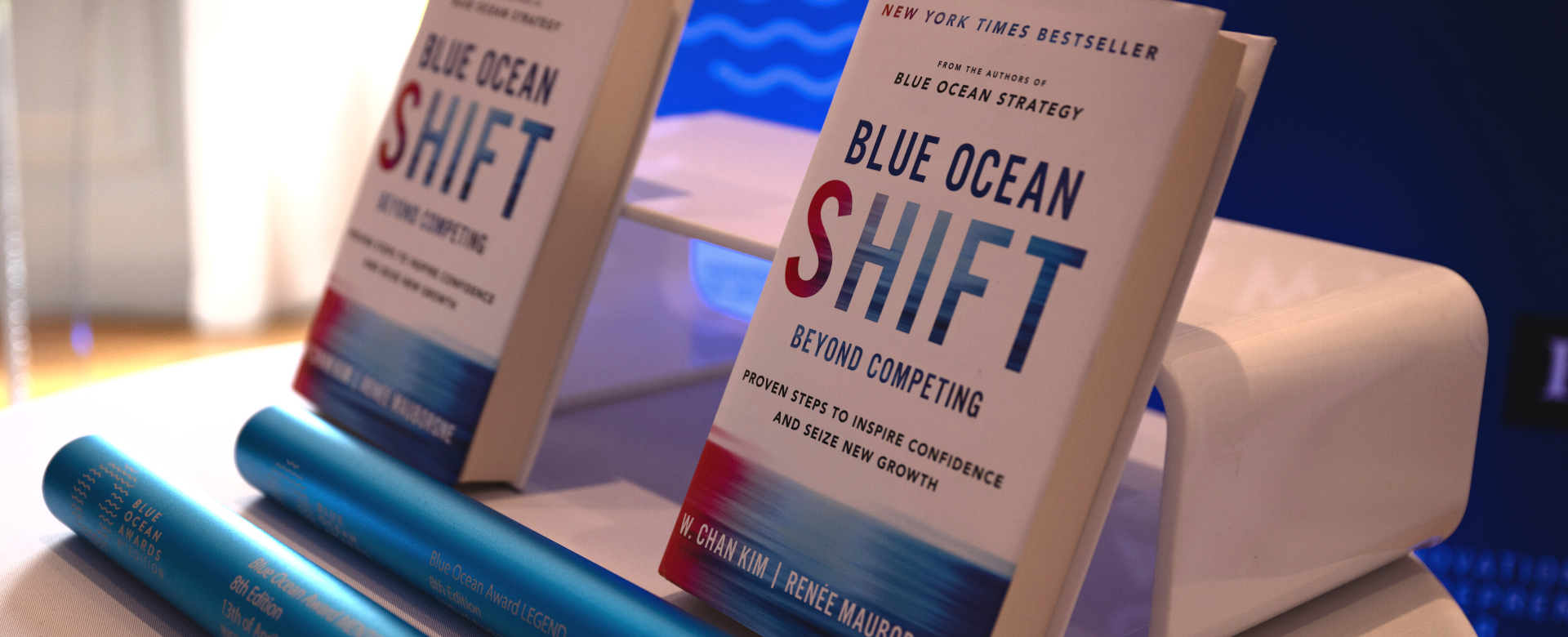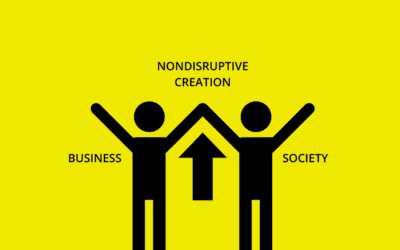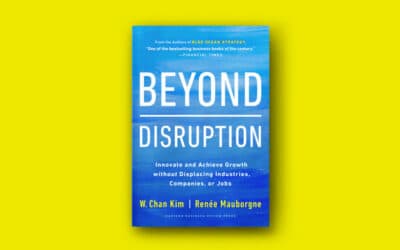What skills are most important when starting a new business based on blue ocean strategy, and why? (Ibrahim via email)
The most fundamental thing is to have a blue ocean mindset and perspective. This means being willing to challenge some deeply ingrained beliefs. For example, people often assume that companies face a value-cost trade-off. This is the view that you can either increase value to customers at higher cost, or create reasonable value at lower cost. But a blue ocean mindset is one that looks to break the value-cost trade-off through value innovation, which is about pursuing differentiation and low cost simultaneously.
Conventional wisdom often leads people to interpret blue ocean strategy through old conceptual lenses. This can trap people in red oceans just as they’re trying to escape them. So it’s crucial to get your framing right, to break with the ‘mental models’ that you may have accepted as true, and look at things from a new perspective.
Your mindset is more ingrained than you realize, but with the right perspective and a determination to challenge existing rules and ways of thinking, you can create your own blue oceans.
If you were at the very first stage of starting a new business based on blue ocean strategy, which industries would you advise entrepreneurs to start with, and why? (Ibrahim via email)
It’s not so much a question of which industry to start with, but the mindset you bring to it (see above). So whether you’re starting a chain of barber shops, launching a fitness company, or creating a jet fleet, a blue ocean mindset is one where you pursue value innovation and create a leap in value for both buyers and the company.
Conventional wisdom often leads people to interpret blue ocean strategy through old conceptual lenses
Blue oceans can be created in any industry, and are not industry specific. To get technical: blue ocean strategy believes in a ‘reconstructionist’ view of strategy, where it is strategy that shapes structure. You can read more about this in our Harvard Business Review article, How strategy shapes structure.
How do you see blue ocean strategy working for the food and beverage industry, which has always been so red? (David via email)
As we talk about in our book, Blue Ocean Strategy, red oceans can be found in all industries, from pharmaceuticals to circuses and beyond. The food and beverage industry is no exception, and it offers some powerful examples of companies that escaped red oceans and created new market space. Starbucks, for example, transformed the coffee industry by shifting its focus from coffee as a mere commodity, towards the emotional atmosphere in which people enjoy drinking it.
In the food and beverage industry, as in any industry, it’s not just about the product. You need to think about service and delivery, and how these can create blue oceans. Wawa, a chain of convenience stores and gas stations, is a good example. Usually, we think of gas stations as second-class food outlets. But Wawa’s blue ocean shift was to become “a restaurant that sells gas”, offering high-quality food and a delivery service. By differentiating itself in this way, Wawa created a blue ocean that the competition had yet to sail into.
Red oceans can be found in all industries, from pharmaceuticals to circuses and beyond.
Another example, which we also look at in Blue Ocean Strategy, comes from the US wine industry. This industry has always been highly competitive, and wine manufacturers have systematically competed along the same set of factors for centuries. So for strategists, the question was how to break out of this red ocean of bloody competition and open up a blue ocean of uncontested market space.
One answer was given by Australian winemakers, Casella Wines, who entered the US market in 2001. They re-oriented their strategic focus from competitors to alternatives and from customers to noncustomers. They looked at the alternatives of beer and ready-to-drink cocktails, and competed on new factors such as ‘easy drinking’ and ‘fun and adventure’. As a result of this strategic shift, their wine, [yellow tail], became the number-one selling wine in a 750-ml bottle sold in the US in 2005.
It’s no surprise that founder and CEO of Panera Bread, Ron Shaich, said that “most food-service companies compete in a bloody, shark-infested red ocean”. Creating blue oceans is more relevant than ever to this sector’s future performance.
Read next: “7 Powerful Blue Ocean Strategy Examples that Left the Competition Behind.”
Isn’t it idealistic to start from scratch when forming our blue ocean strategy? Suppose a company is close to bankruptcy – isn’t the priority to straighten out the situation, and isn’t benchmarking one of the ways to do this? (Gwendal via LinkedIn)
Ideally, a company will apply a blue ocean strategy long before it finds itself in the ‘valley of death’. To do this, you need to understand the current state of play in the known market space. A strategy canvas helps you visualize and identify those factors that your industry is competing on. When everyone else looks like you on the strategy canvas, you know it’s time to break away from the pack.
Ideally, a company will apply a blue ocean strategy long before it finds itself in the ‘valley of death’.
But if a company has fallen into the valley of death, and is facing bankruptcy, then the priority is to get to a place of financial stability. But this is just a temporary solution to buy you time, as you will remain stuck in the tired and overcrowded red ocean. To ensure strong profitable growth, it will be important to take action to break away from the competition and sail toward the blue ocean.
Read next: “5 Compelling Strategy Canvas Examples You Can Learn From.“
How can a business work out if its blue ocean strategy is moving in the right direction and the decisions it takes are genuinely adding value? In other words, where is the red line, and how far you can go from your original product? (Otabek via email)
Blue ocean strategy offers a robust way to maximize your upside while minimizing risks. A key framework here is the Blue Ocean Idea Index, which lets you test the commercial viability of your blue ocean ideas. It poses four questions:
1. Is there a compelling reason for people to buy your offering?
2. Is your offering priced to attract the mass of target buyers so they have a compelling ability to pay for it?
3. Can you produce your offering at the strategic price and still earn a healthy profit from it?
4. What are the adoption hurdles in rolling out your idea and have you addressed these upfront?
The first two questions tackle the revenue side of your business model. They ensure that you create a leap in net buyer value. The third question deals with the profit side of your business model. And the last question encourages you to think about the externalities that could trip up even the best new idea.
Each of these questions comes with tools and frameworks – so you can get systematic about creating your blue oceans.
As a CEO, why should I adopt a blue ocean strategy? (Zhang via Twitter)
In our view, the role of a CEO is not just to manage today, but to build for tomorrow. In today’s world of supply exceeding demand, and social media increasingly affecting the way customers perceive a company’s brand, you need to know how to stand out and break away from the competition.
Building for the future means creating uncontested market space through value innovation. Unfortunately, Microsoft (to take just one example) hasn’t been able to do that. For all its investment in research and development, it remains stuck in a red ocean. The result has been a relatively flat stock price for more than ten years. It has also lost its edge as a talent magnet.
There’s never been a more pressing need to create blue oceans than now. As technology continues to improve industrial productivity, suppliers are producing a greater range of products and services than ever before.
The result is that supply is overtaking demand in more and more industries, leading to greater commoditization of products and services. As brands become more similar, people increasingly base purchase choices on price, leading to shrinking profit margins. And so it becomes harder for brands to differentiate themselves, leading many companies to compete principally on cost.
In such a business climate, CEOs cannot afford not to pursue a blue ocean strategy. You can read more about this topic in our article for Chief Executive, The secret to a successful strategic planning process
Some questions have been translated or lightly edited for clarity

















